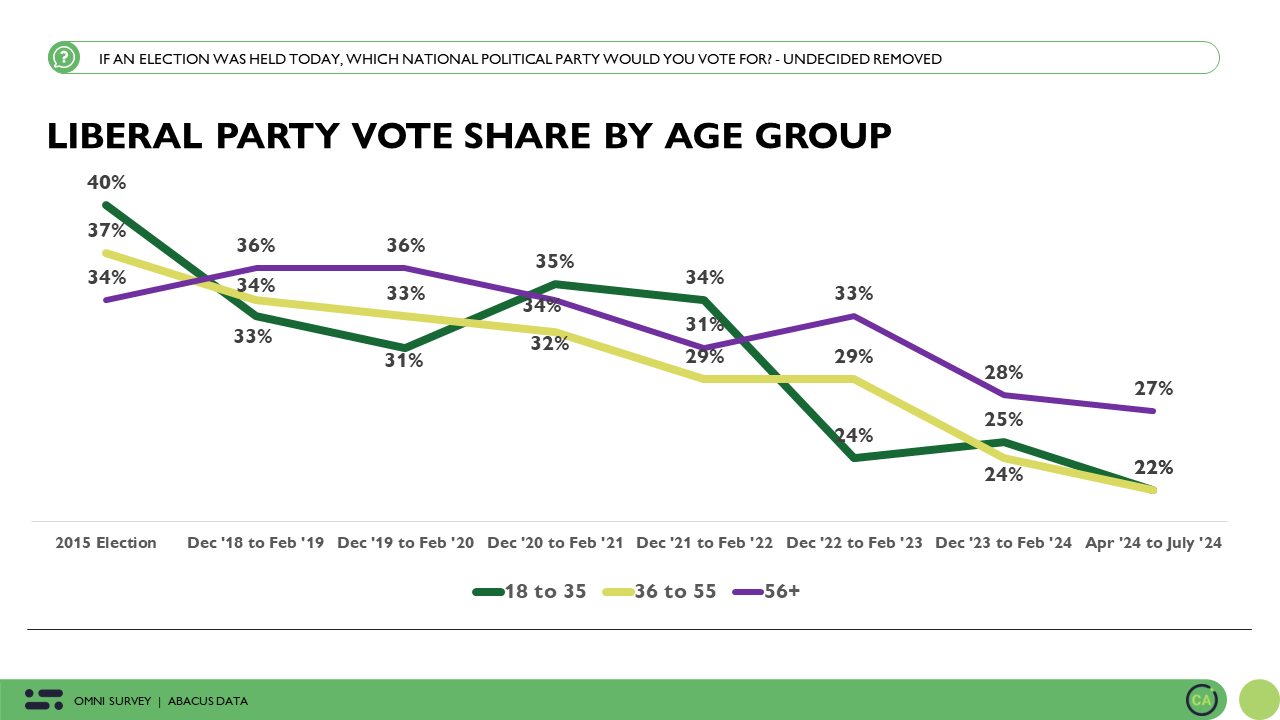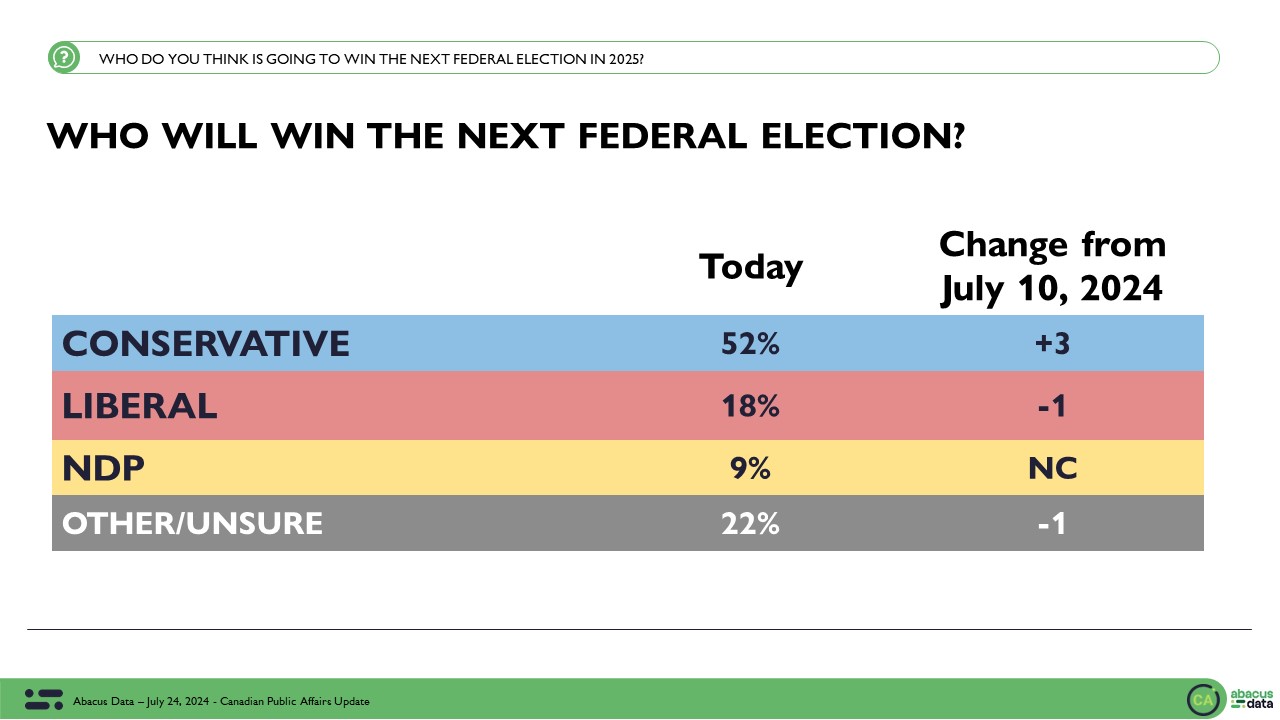The next 10%: Reflections and data on how the Conservatives can grow.
February 10, 2018
On Friday, I participated in a panel discussion at the Manning Networking Conference in Ottawa. The title of the panel was Spotlight on The Next 10% and we discussed how the federal Conservative Party might grow towards winning the next election in 2019.
In preparing for that panel, I had a quick look at some recent public opinion data Abacus Data collected earlier this year.
In January, we interviewed over 1,450 Canadian adults and asked our core political questions plus a number of other questions meant to understand their broader political attitudes.
And here’s the basis of my analysis:
51% of Canadians are open to voting Conservative. This is the accessible pool of voters available to the Conservative Party. This pool is about the same size as the NDP (50%) and smaller than the Liberal Party’s (56%).
This pool of accessible voters has increased since the 2015 election. In November 2015, only 42% of Canadians said they would consider voting Conservative. Today its about 8 points higher.
At the same time, 26% of Canadians said they would vote Conservative if an election was held at the time of the survey. That’s five points fewer than the Liberals and 11 points more the NDP. 20% overall said they were undecided.

It’s this 25-point gap between those open to voting Conservative and those who would actually vote Conservative that I find interesting. In order to win in 2019, the Conservative will need to find a way to hold their current support base together while finding a way to convert about half of those who are currently open to voting for them but are either committed to another party or undecided. I call these eligible voters potential Conservative supporters.
By comparing those who currently support the party with those potential supporters, we might better understand what the party needs to do and who it needs to attract to grow its support.
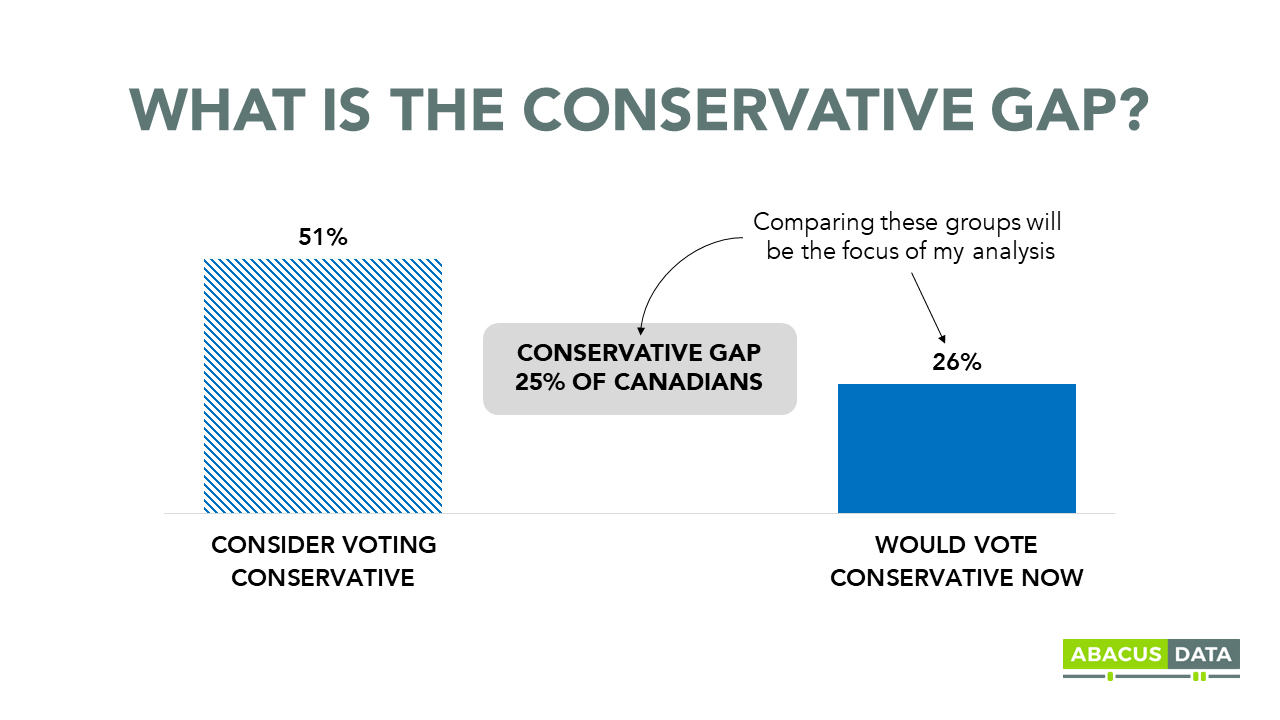
Here’s what I see:
Current Conservative supporters are older than the group it needs to convert. Finding a way to engage and connect with Canadians under 45 is not a necessity to win, but failing to convert at least some of them will make it harder to do so. Remember, in 2019 all Millennials will be eligible to vote and they will make up the largest generational cohort in the electorate, Conservatives don’t need to win this group, but they have to do better than they did in 2015.
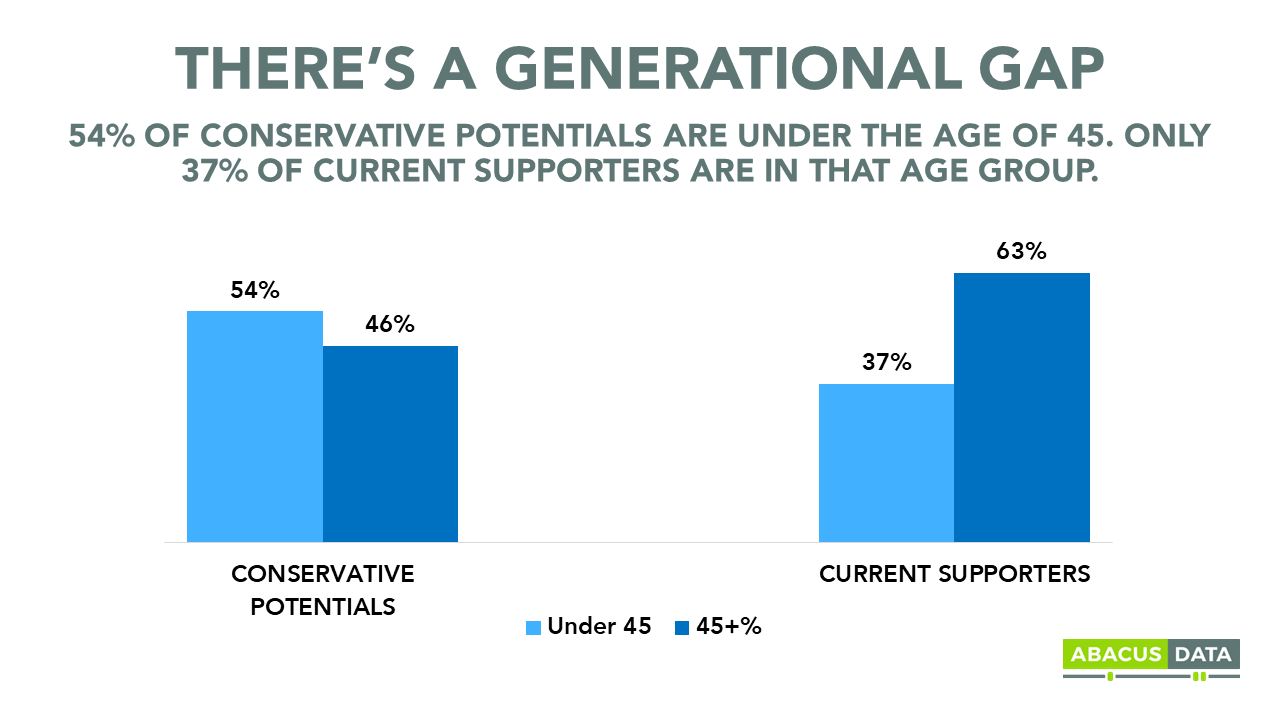
Potential supporters are more diverse ethnically than current supporters. Only 11% of current Conservative supporters identify as a member of a visible minority or racialized group compared with 25% among its potential support group. Appearing open to diversity and immigration worked well for the party in the past. Since the 2015 election, the Conservatives have not made much ground in growing support among this important and expanding voter group.
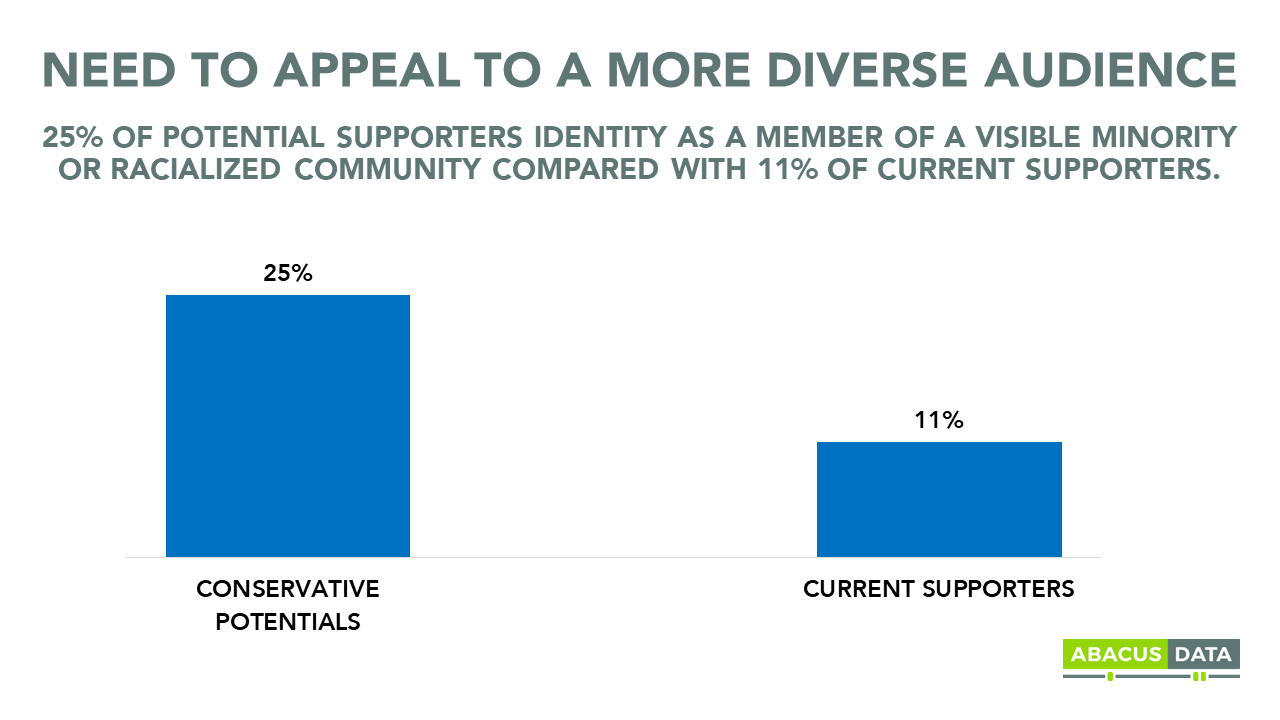
Housing affordability is a top issue to many Canadians, especially younger ones looking to enter the market. A third of potential voters are currently renters, almost 9-points more than among Conservative supporters. What is the party’s answer to the affordability crisis in the housing market?
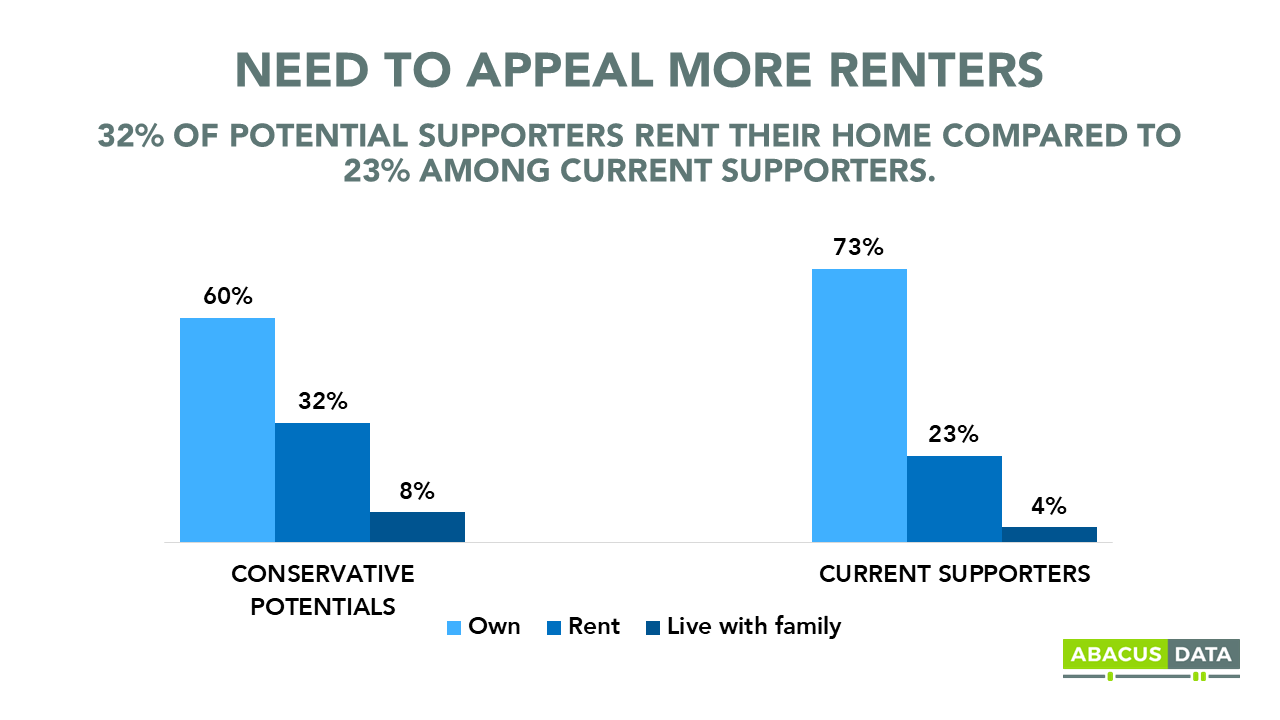
At the same time, potential Conservative supporters are more likely to live in cities than those currently supporting the party. Growing the party’s appeal to urban voters is important if it hopes to expand support. Issues around transit, traffic congestion, affordability and quality of life matter to these potential supporters.
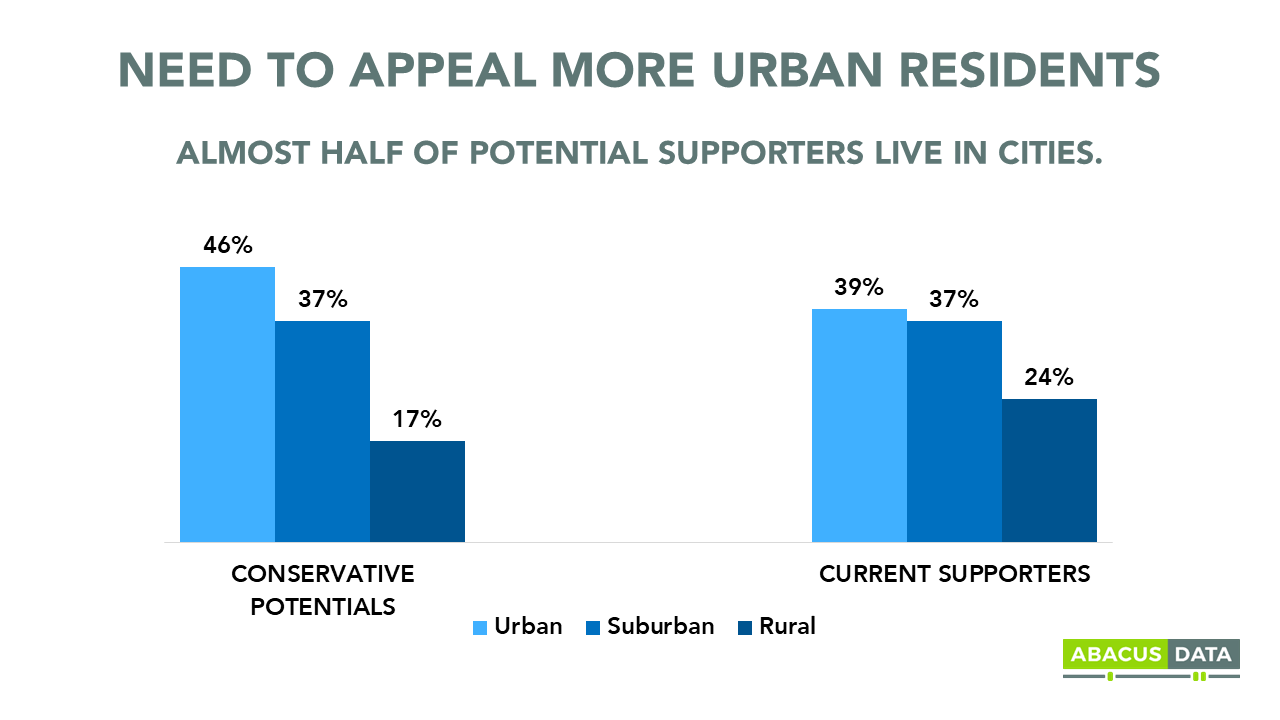
Most Conservative supporters (77%) believe that government is almost always wasteful and inefficient while only 45% of potential supporters feel the same way. Many see a role for government, especially in evening out the inadequacies of the market.

Conservative supporters are split on the impact of immigration on the country but potential supporters are more likely to believe immigrants strengthen the country. Potential supporters are also more likely to feel that diversity is a virtue as opposed to a vice in Canada.

Perhaps where Conservative supporters and potential supporters are split the most are on issues related to the environment and climate change. 69% of potential supporters believe that stricter environmental laws and regulations are worth the cost compared with 49% of Conservative supporters. Likewise, two thirds of potential supporters believe that serious action is needed on climate change, even if it means some things cost more. 47% of Conservative supporters feel the same way.
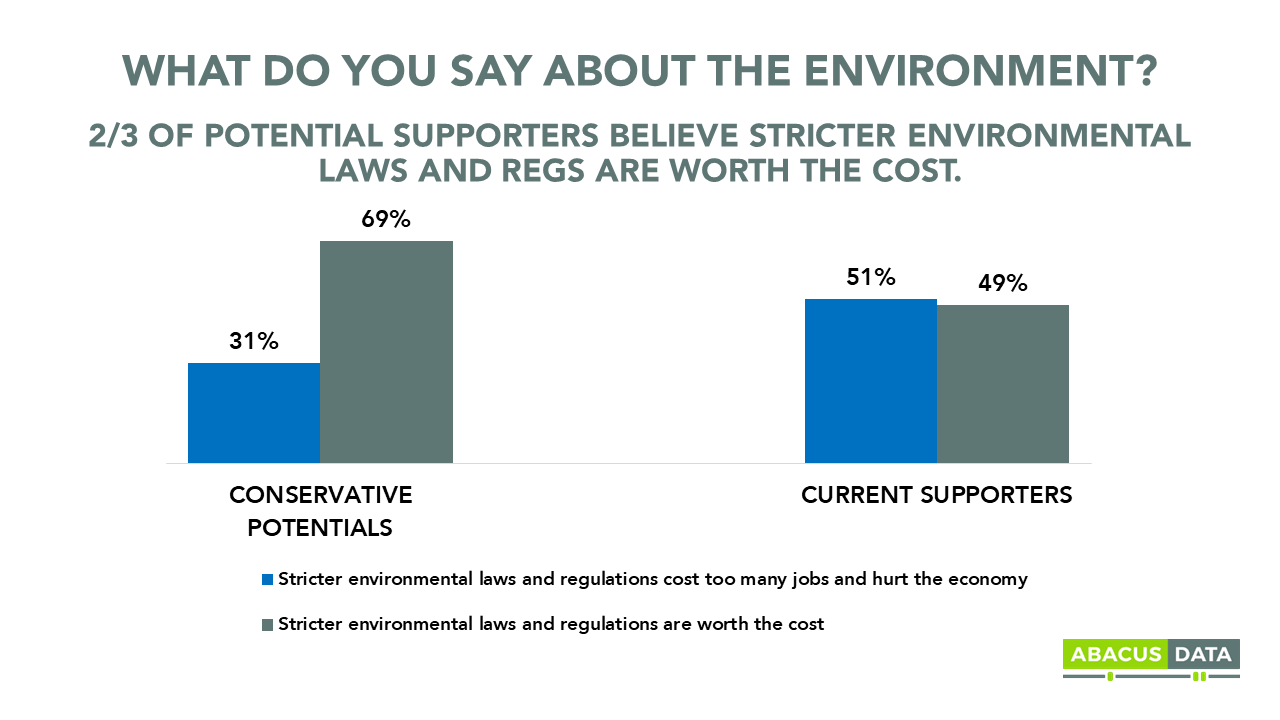

Social conservatism has its limits. There’s a shrinking audience for political leaders who don’t treat all people equally. As an example, look at the gap in support for schools sanctioning gay-straight alliances.

Finally, when it comes to how both groups feel about political leaders in the country, there’s quite a large gap. While Conservative supporters almost unanimously have a negative view of Prime Minister Trudeau, only 20% of potential supporters feel this way. And while Mr. Scheer is well likely among current Conservative supporters, he remains a largely undefined figured in the minds of those open to voting Conservative.
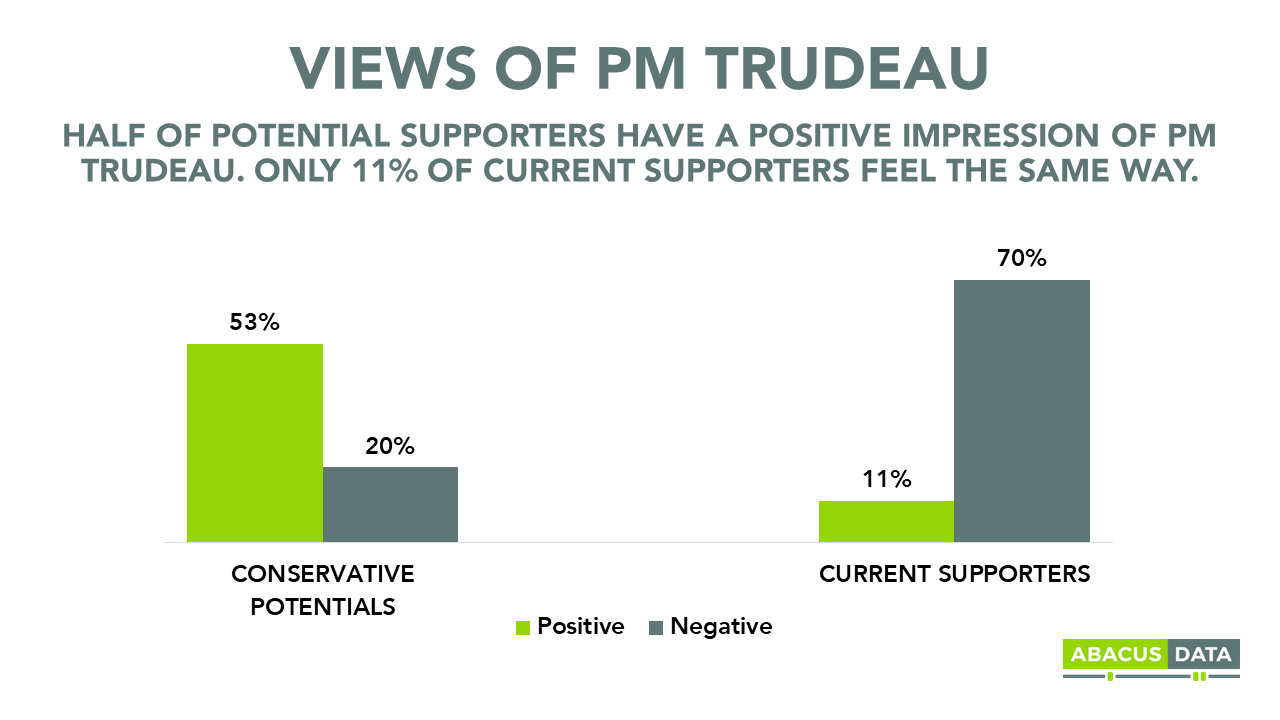
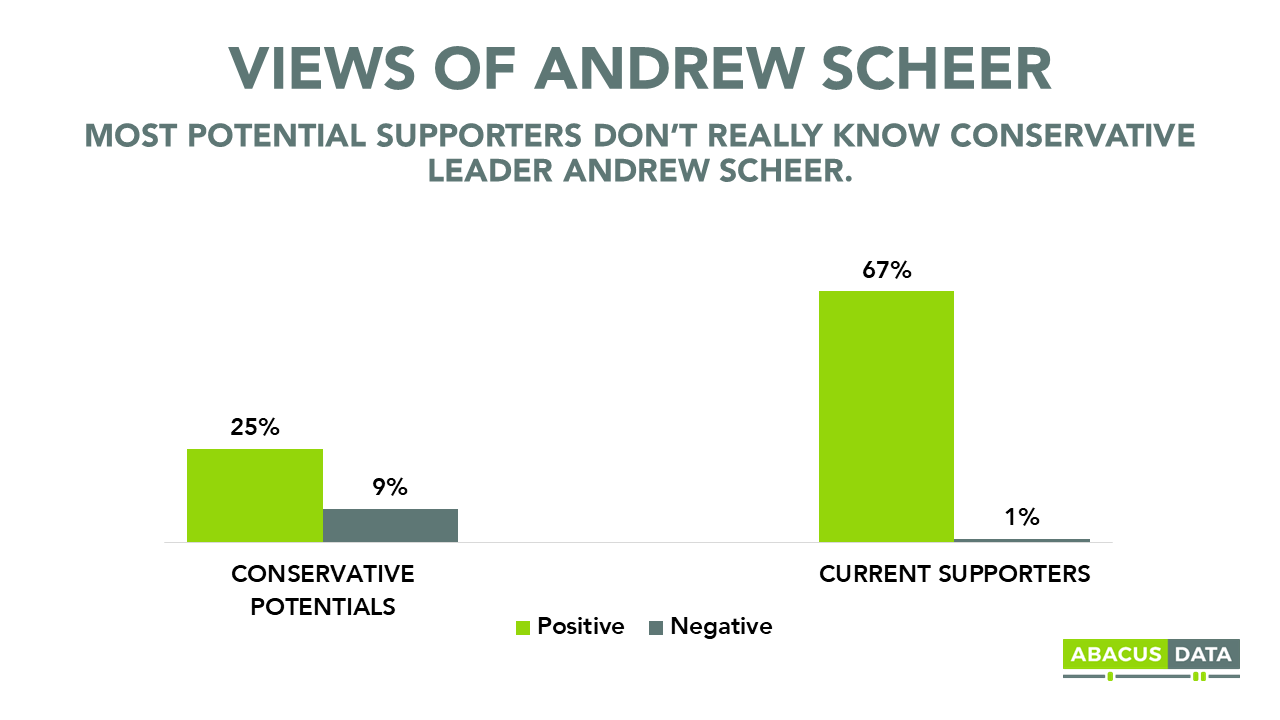
THE UPSHOT
These results suggest that the Conservative Party does have a path back to power. And it doesn’t mean it has to move completely to the centre and mimic the Liberal Party. I think it means its leaders have to talk about the big questions of our day: equality, climate change, and economic security.
But to do so, a few things likely have to occur.
First, impressions of Mr. Trudeau must change among those open to voting Conservative. Right now, only 20% have a negative view with a majority feeling positive about the Prime Minister. At the same time, Mr. Scheer needs to introduce himself to this group, build a relationship, and demonstrate he’s a viable alternative as Prime Minister.
Second, while there is runway for the Conservatives to appeal to the more conservative and populist elements of the potential supporter group, such a strategy requires converting almost all of those who share views with the majority of Conservative supporters.
In contrast, a route more likely to “widen the tent” may be one in which the party better aligns with these potential supporters on some key issues. It needs to be seen as having a credible plan to deal with climate change. It has to offer an open minded and welcoming attitude to those from more diverse backgrounds and different lifestyles and it needs to offer conservative solutions to those living in cities and among younger Canadians.
Unless the party can appeal more broadly to these groups, the road to majority is tenuous at best.


